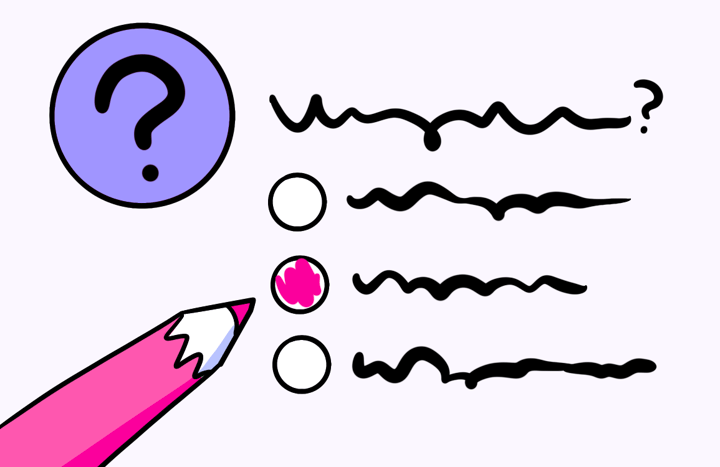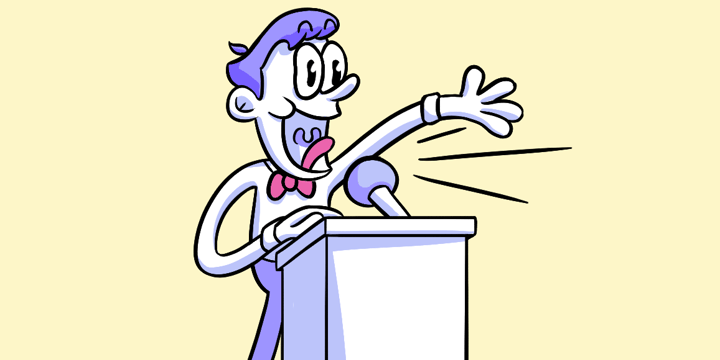Boosting UX Efficiency: Key Strategies for Optimizing User Experiences
Improving UX Efficiency: Strategies for Optimizing User Experiences. In today’s fast-paced digital world, user experience (UX) has become a key factor in determining the success of online businesses. As users have become more discerning and demanding, it’s crucial for companies to prioritize UX efficiency. In this article, we will explore the importance of UX efficiency, its impact on business success, key elements of an efficient user experience, strategies for optimizing UX, and how to overcome common challenges.
🔩 The Nuts and Bolts:
- UX efficiency enhances user productivity: Streamlined interfaces and clear design help users complete tasks quickly with minimal effort, reducing frustration and increasing engagement.
- Simplicity and clarity drive UX efficiency: Clean, intuitive designs eliminate clutter and provide clear guidance, allowing users to navigate websites and apps with ease and confidence.
- Consistency across platforms builds user trust: Consistent interactions and design elements across devices make experiences seamless, reducing cognitive load and improving efficiency.
- Personalization boosts engagement and efficiency: Tailoring content and experiences based on user behavior makes it easier for users to find what they need, enhancing overall satisfaction.
- Regular usability testing improves UX efficiency: Continuous testing and feedback from real users help uncover usability issues and provide insights for refining design and functionality.
- Data-driven decisions optimize user experiences: Analyzing user behavior and patterns through analytics helps businesses identify bottlenecks and improve the efficiency of their designs.
- Balancing aesthetics with functionality is essential: Visually appealing designs should complement, not hinder, functionality. Prioritizing usability ensures a smooth and efficient experience.
Understanding the Importance of UX Efficiency
When we think about user experience, the first thing that comes to mind is usability. However, UX efficiency goes beyond simply creating user-friendly interfaces. It encompasses the seamless flow of interactions and the ability for users to accomplish their goals quickly and seamlessly. In essence, it’s about maximizing productivity and minimizing frustration.
Efficiency in user experience design is not just about making things look nice; it’s about making things work efficiently. It involves understanding the user’s needs, behaviors, and motivations, and designing interfaces that align with those factors. By focusing on efficiency, we can create experiences that are not only visually appealing but also highly functional and intuitive.
Defining UX Efficiency
UX efficiency refers to the ability of a design to allow users to complete tasks with minimal effort, time, and cognitive load. It involves streamlining processes and eliminating unnecessary steps or friction points that can hinder users from achieving their objectives.
One way to achieve UX efficiency is through effective information architecture. By organizing content in a logical and intuitive manner, users can easily find what they’re looking for without having to navigate through a maze of menus and links. Clear and concise labeling, as well as well-designed navigation systems, can also contribute to a more efficient user experience.
Another aspect of UX efficiency is the speed at which users can accomplish their tasks. Slow loading times, unresponsive interfaces, and complex workflows can all contribute to a frustrating user experience. By optimizing performance and minimizing unnecessary delays, we can enhance the efficiency of the overall user experience.
The Impact of UX Efficiency on Business Success
An efficient user experience has significant implications on business success. When users can effortlessly navigate through a website or an app, they are more likely to stay engaged, convert into customers, and become loyal advocates.
For e-commerce websites, UX efficiency can directly impact conversion rates. A smooth and efficient checkout process, for example, can reduce cart abandonment and increase the likelihood of completing a purchase. Similarly, a well-designed product page that provides all the necessary information in a clear and concise manner can help users make informed decisions and increase sales.
Furthermore, UX efficiency can also contribute to positive brand perception and customer satisfaction. When users have a seamless and hassle-free experience, they are more likely to recommend the product or service to others, leading to positive word-of-mouth and potential new customers.
On the other hand, a clunky and time-consuming experience can lead to frustration, abandonment, and negative word-of-mouth. In today’s competitive digital landscape, where users have countless options at their fingertips, businesses cannot afford to overlook the importance of UX efficiency.
In conclusion, UX efficiency is a crucial aspect of user experience design. By focusing on maximizing productivity, minimizing frustration, and streamlining processes, we can create experiences that not only meet user needs but also drive business success.
Make your design decisions count.
Subscribe to Design Under Pressure. Get insights, UX metrics, and tools for bold, informed design.
We respect your inbox. Just insights. No fluff. Privacy Policy.
Key Elements of an Efficient User Experience
Creating an efficient user experience involves paying attention to several key elements. Let’s take a closer look at some of them:
Simplicity and Clarity in Design
An efficient UX starts with a clean and intuitive design. Minimize clutter and unnecessary elements, and ensure that the interface is easy to understand and navigate. Use clear and concise language, logical information architecture, and intuitive visual cues.
When it comes to simplicity and clarity in design, less is often more. By removing unnecessary elements and focusing on the core functionality, you can create a streamlined user experience that allows users to accomplish their tasks quickly and efficiently. A clutter-free design also helps to reduce cognitive load, allowing users to focus on the most important aspects of the interface.
Furthermore, a well-designed user interface should provide clear and concise instructions, labels, and feedback. This helps users understand how to interact with the system and provides them with the necessary guidance to complete their tasks successfully. By using intuitive visual cues, such as icons and color coding, you can further enhance the clarity of the design and make it easier for users to navigate and understand the interface.
Consistency Across Platforms
Consistency is paramount when it comes to UX efficiency. Ensure that the design principles, interactions, and terminology remain consistent across different platforms and devices. This helps users to feel familiar and confident, regardless of the context or device they are using.
Consistency in design not only improves the efficiency of user experiences but also helps to establish a strong brand identity. When users encounter a consistent design across different platforms, they can easily recognize and associate it with your brand. This builds trust and loyalty, as users know what to expect and can rely on a consistent and familiar experience.
Moreover, consistency in interactions and terminology makes it easier for users to transfer their knowledge and skills from one platform to another. For example, if a user is familiar with the navigation patterns and terminology used in a mobile app, they will be able to quickly adapt to the same patterns and terminology when using a desktop website or a smart TV application. This reduces the learning curve and allows users to be more efficient in accomplishing their tasks.
Personalization and User Engagement
Personalization enhances the efficiency of user experiences by adapting to users’ preferences and behaviors. By leveraging user data and providing personalized recommendations or content, you can help users find what they need quickly and effortlessly. This leads to increased engagement and customer satisfaction.
Personalization can take various forms, such as personalized product recommendations, personalized content suggestions, or personalized user interfaces. By tailoring the experience to each individual user, you can create a more relevant and engaging experience that meets their specific needs and interests.
For example, an e-commerce website can use personalization to show product recommendations based on the user’s browsing history and purchase behavior. This not only helps users discover new products that they might be interested in but also saves them time and effort by presenting them with options that are most likely to appeal to their preferences.
In addition to personalization, user engagement is another important element of an efficient user experience. By providing interactive elements, such as quizzes, polls, or social sharing features, you can encourage users to actively participate and engage with your website or application. This not only increases the time spent on your platform but also creates a sense of ownership and involvement, leading to a more efficient and enjoyable user experience.
UX Terms
Strategies for Optimizing User Experiences
Now that we understand the importance of UX efficiency and the key elements involved, let’s explore some strategies to optimize user experiences:
Implementing User Feedback
User feedback is a valuable source of insights for improving UX efficiency. Actively collect feedback through surveys, interviews, or user testing, and use this data to identify pain points or areas for improvement. Addressing user feedback not only enhances the experience but also increases user trust and loyalty.
When implementing user feedback, it is important to prioritize the most critical issues first. By focusing on the areas that have the greatest impact on the user experience, you can ensure that your efforts are directed towards the most significant improvements. Additionally, consider implementing a feedback loop where users are informed of the changes made based on their feedback. This not only shows that you value their input but also keeps them engaged in the improvement process.
Regular Usability Testing
Usability testing is essential for uncovering usability issues and identifying areas where users may struggle. Conducting regular usability tests allows you to validate design decisions, uncover hidden problems, and refine the user experience. Involve real users in the testing process to gain valuable insights into their behavior and preferences.
When conducting usability tests, it is important to create realistic scenarios that mimic the user’s actual experience. This will help you identify any potential roadblocks or challenges that users may face. Additionally, consider conducting both moderated and unmoderated usability tests. Moderated tests allow you to observe users in real-time and ask follow-up questions, while unmoderated tests provide more flexibility and scalability.
Leveraging Data and Analytics
Data and analytics provide valuable insights into user behavior and usage patterns. By analyzing data, you can identify patterns, trends, and opportunities for optimization. Use analytics tools to track user journeys, identify bottlenecks, and make data-driven decisions to improve the user experience.
When leveraging data and analytics, it is important to define key performance indicators (KPIs) that align with your UX goals. These KPIs can include metrics such as conversion rates, bounce rates, or time on page. By regularly monitoring these metrics, you can track the impact of your optimization efforts and make informed decisions to further enhance the user experience. Additionally, consider implementing A/B testing to compare different variations of your design and determine which one performs better.
Furthermore, don’t limit yourself to just quantitative data. Qualitative data, such as user feedback or usability test observations, can provide valuable insights into the user’s emotions, motivations, and frustrations. By combining both quantitative and qualitative data, you can gain a holistic understanding of the user experience and make more impactful optimizations.
🚀 If you’re using Helio
Leverage a comprehensive report page.

Make data-driven decisions to improve the user experience.
Overcoming Common UX Efficiency Challenges
While improving UX efficiency is critical, it’s not without its challenges. Let’s explore some common challenges and how to overcome them:
Balancing Aesthetics and Functionality
One common challenge is finding the right balance between aesthetics and functionality. While it’s important to create visually appealing designs, it should never compromise usability or efficiency. Ensure that the user experience remains the top priority, while also considering aesthetics to create an engaging and memorable experience.
Managing User Expectations
Managing user expectations is essential to avoid disappointment or frustration. Set clear expectations through accurate product descriptions, transparent pricing, and clear communication. Be honest about what your product or service can deliver and ensure that it meets or exceeds user expectations.
Adapting to Technological Changes
Technology evolves rapidly, and staying ahead of the curve is vital to maintain UX efficiency. Continuously monitor industry trends and technological advancements to ensure that your design remains up to date. Embrace new technologies and design methodologies that can enhance the user experience and adapt to changing user needs.
In conclusion, improving UX efficiency is crucial for businesses looking to create seamless and optimized user experiences. By understanding the importance of UX efficiency, focusing on key elements, implementing effective strategies, and overcoming common challenges, businesses can create experiences that delight users, drive customer loyalty, and ultimately contribute to business success.
UX Efficiency FAQs
UX efficiency refers to designing user experiences that allow users to complete tasks with minimal effort, time, and cognitive load. It involves streamlining interactions, reducing friction, and optimizing designs to create seamless, productive experiences for users.
A highly efficient user experience keeps users engaged, improves conversion rates, and increases customer loyalty. Businesses that prioritize UX efficiency benefit from higher satisfaction, reduced frustration, and better overall user retention, all of which contribute to revenue growth.
Focus on creating a simple and intuitive design, reduce unnecessary steps in user workflows, and ensure your site or app is fast and responsive. Regular usability testing and collecting user feedback are also essential for identifying areas to optimize and refining the user experience.
Personalization adapts the user experience to individual preferences and behaviors, allowing users to find relevant content quickly. This enhances engagement and satisfaction, ultimately increasing the overall efficiency of the experience.
Use consistent design principles, terminology, and interactions across devices to ensure a seamless experience. This helps users feel confident and familiar with your platform, no matter where or how they access it.
Usability testing identifies friction points and areas where users struggle. By involving real users in the testing process, you can uncover issues that may not be immediately apparent and make informed improvements to enhance the overall user experience.
Balancing aesthetics with functionality, managing user expectations, and staying up to date with technological changes are common challenges. Businesses should prioritize usability, clear communication, and continuously adapt their designs to meet evolving user needs.



